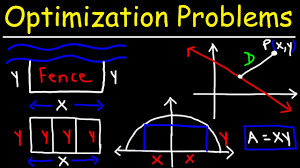
The Art of Optimization: Maximizing Efficiency in Every Aspect
Optimization is the process of making something as effective or functional as possible. In today’s fast-paced world, where time and resources are precious commodities, optimization has become a crucial concept in various fields, from business and technology to personal productivity.
When we talk about optimization, we are essentially talking about maximizing efficiency. This can involve streamlining processes, eliminating waste, improving performance, and ultimately achieving better results with the same or fewer resources.
The Importance of Optimization
Optimization plays a vital role in enhancing productivity and competitiveness. By optimizing workflows, businesses can reduce costs, increase output, improve quality, and gain a competitive edge in the market. In the realm of technology, optimization helps software run faster, websites load quicker, and systems operate more smoothly.
Strategies for Optimization
There are various strategies for optimization that can be applied depending on the context:
- Process Optimization: Analyzing and improving existing processes to make them more efficient and effective.
- Resource Optimization: Maximizing the use of available resources to achieve optimal results.
- Data Optimization: Organizing and managing data in a way that enhances accessibility and usability.
- Performance Optimization: Enhancing the performance of systems or software to deliver faster results.
The Role of Technology in Optimization
Technology plays a significant role in enabling optimization across various domains. From automation tools that streamline repetitive tasks to data analytics platforms that provide insights for decision-making, technology empowers organizations and individuals to optimize their operations effectively.
In Conclusion
Optimization is not just about doing things faster; it’s about doing things smarter. By embracing the principles of optimization and continually seeking ways to improve efficiency, we can unlock new levels of productivity and success in all aspects of our lives.
Understanding Optimization: Key Questions and Insights for Improved Efficiency and Productivity
- What is optimization and why is it important?
- What are the benefits of optimizing processes?
- How can technology help in optimizing workflows?
- What are some common strategies for optimization?
- How does optimization contribute to increased efficiency and productivity?
What is optimization and why is it important?
Optimization is the process of maximizing efficiency and effectiveness in various aspects of life, business, and technology. It involves streamlining processes, reducing waste, improving performance, and achieving better results with fewer resources. Optimization is important because it allows individuals and organizations to enhance productivity, reduce costs, increase output, improve quality, and gain a competitive edge in the market. By optimizing workflows, utilizing resources effectively, and leveraging technology to streamline operations, optimization plays a crucial role in driving success and innovation in today’s fast-paced world.
What are the benefits of optimizing processes?
Optimizing processes offers a multitude of benefits across various aspects of an organization. By streamlining workflows and eliminating inefficiencies, optimization can lead to cost savings, increased productivity, and improved quality of output. It enables businesses to operate more efficiently, meet deadlines more effectively, and adapt to changing market conditions with agility. Moreover, optimized processes enhance employee satisfaction by reducing unnecessary workload and allowing individuals to focus on value-adding tasks. Ultimately, the benefits of optimizing processes extend beyond immediate gains to create a foundation for sustainable growth and competitive advantage in today’s dynamic business landscape.
How can technology help in optimizing workflows?
Technology plays a pivotal role in optimizing workflows by providing tools and solutions that streamline processes, enhance efficiency, and drive productivity. Through automation, data analytics, and workflow management systems, technology enables organizations to identify bottlenecks, eliminate redundancies, and improve the overall flow of tasks. By leveraging technology to digitize manual processes, assign tasks automatically, track progress in real-time, and facilitate collaboration among team members, businesses can achieve higher levels of efficiency and effectiveness in their operations. Ultimately, technology acts as a catalyst for optimizing workflows by empowering teams to work smarter, faster, and with greater precision.
What are some common strategies for optimization?
When it comes to optimization, there are several common strategies that can be employed to maximize efficiency and achieve desired outcomes. Process optimization involves analyzing and refining existing workflows to eliminate bottlenecks and improve overall performance. Resource optimization focuses on maximizing the utilization of available resources to achieve optimal results without unnecessary waste. Data optimization entails organizing and managing data in a way that enhances accessibility and usability, making it easier to derive valuable insights. Performance optimization aims to enhance the speed and efficiency of systems or software through fine-tuning and adjustments. By implementing these strategies thoughtfully, individuals and organizations can streamline their operations, boost productivity, and ultimately achieve better results with fewer resources.
How does optimization contribute to increased efficiency and productivity?
Optimization plays a pivotal role in enhancing efficiency and productivity by fine-tuning processes, systems, and resources to operate at their peak performance levels. By identifying inefficiencies, eliminating bottlenecks, and streamlining workflows through optimization strategies, organizations can reduce waste, save time, and maximize output. This results in improved productivity as tasks are completed more effectively and with fewer resources. Optimization also enables better resource allocation, smarter decision-making, and overall operational excellence, leading to increased efficiency across all facets of an organization’s functions. Ultimately, optimization is the key to unlocking higher levels of productivity by ensuring that every aspect of a process is optimized for optimal performance.
